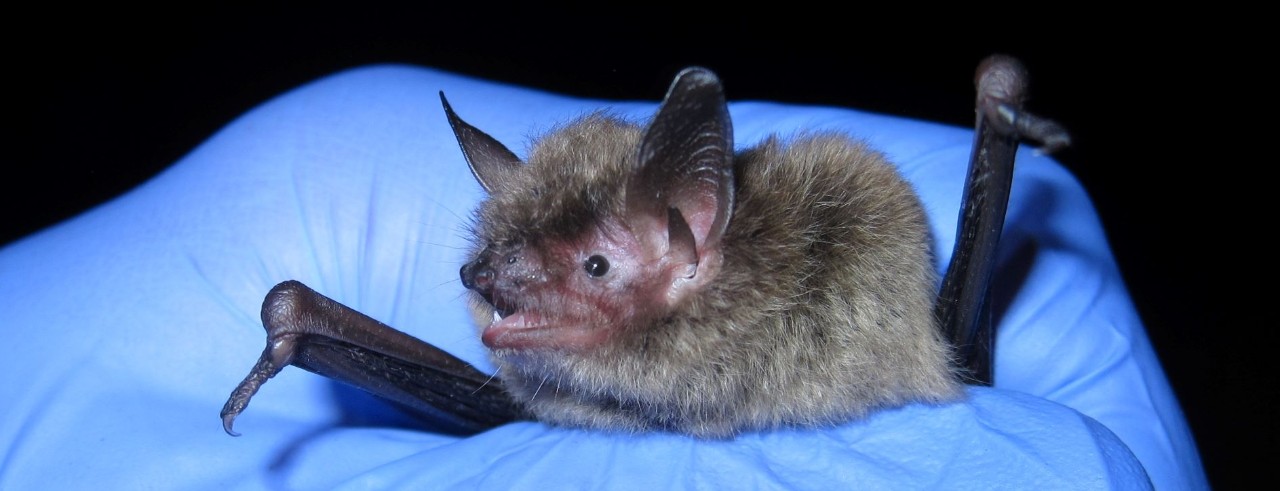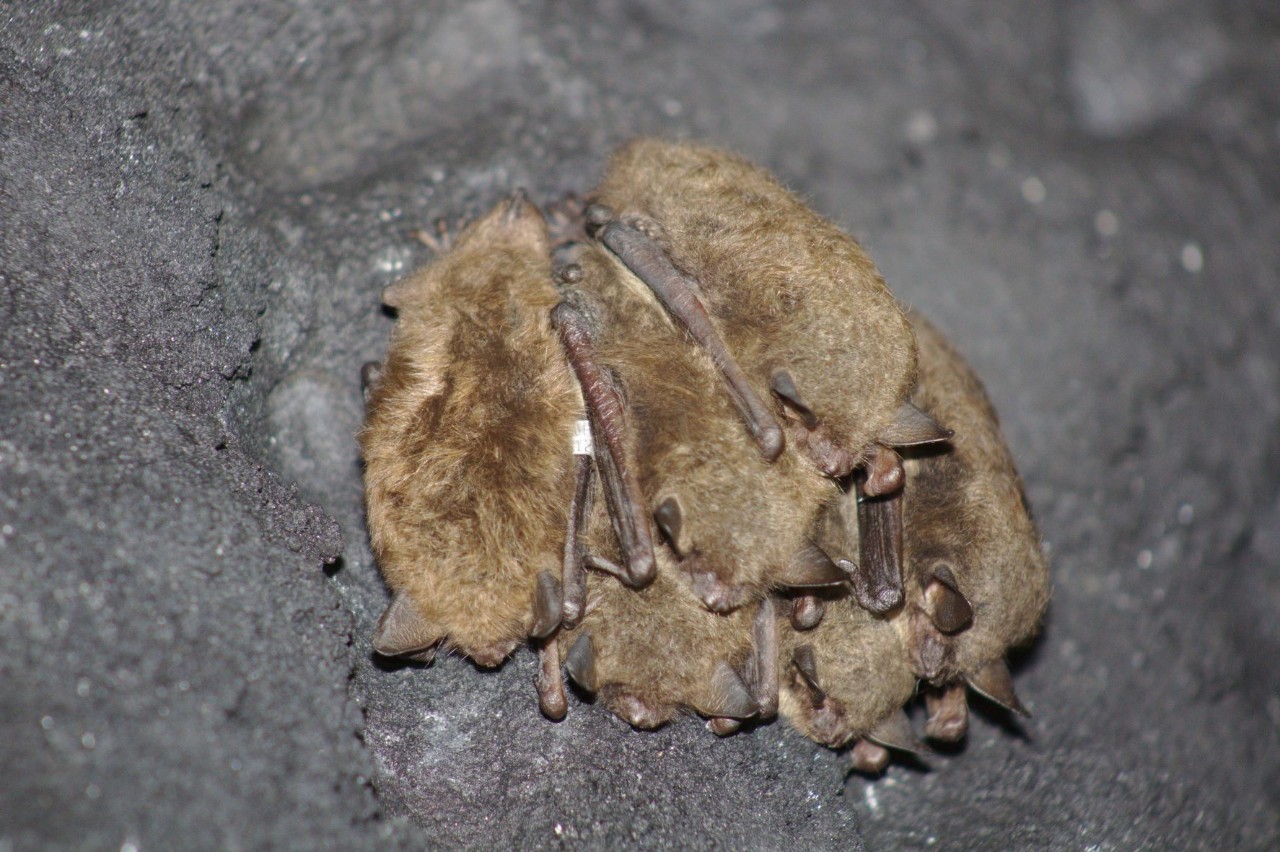
UC’s bat man hopes to rescue imperiled species
Information technology could help save the little brown myotis from extinction
Early one evening in the Spring of 2021, a little brown bat, tagged with a tracking device, emerged from hibernation in eastern Ohio and took flight.
Overhead, an airplane equipped with a tracking receiver, followed the thumb-sized creature in earnest; all the while communicating with conservationists and researchers tailing the bat on the ground. They knew that the bat (called Myotis lucifugus, aka the little brown myotis), was bound for a summer roost. But where?
“We knew of the various winter colonies where it was hibernating, but there were no known summer roosts in Ohio,” says Joseph Johnson, an ecologist and UC assistant professor of information technology, who was among the researchers on the ground.
Imagine their surprise, he says, when they followed the bat about 10 miles to Clendening Marina in Freeport, Ohio.
“One of the fun things about life is that you can have scientists going to great lengths to find something and the folks who live there are like ‘Yeh, if you had called me, I could have told you we had bats.’”

Clendening Marina in Freeport, Ohio. A PhD student in biological sciences at UC, Mattea Lewis, is on a ladder (right) setting up scanners to monitor the bat population. Photo provided/Joseph Johnson.
But these aren’t just any bats. The little brown myotis is an endangered species in Ohio and is currently under review for listing under the federal Endangered Species Act by the United States Fish and Wildlife Service (USFW). The reason: A fungal disease, called white-nose syndrome, brought into the U.S. from Europe has been killing the species since 2006; reducing its population by approximately 95%.

Little brown myotis hibernating at an undisclosed location in Ohio. Tagging the bat, as seen here, helps monitor the population. Photo provided/Joseph Johnson.
The fungus, says Johnson, grows into the skin of bats while they hibernate; a time when their immune systems are tuned down, making them susceptible to disease. It is also a time when they normally require very little food or water and fighting the fungal disease taxes them into dehydration and starvation.
Countless millions of bats have died from this disease, Johnson says, and “what was once the most common bat in Ohio, is now among the rarest.”
Johnson, however, in collaboration with the Ohio Department of Natural Resources, recently received a grant from USFW to continue the 2021 project, which he participated in while on faculty at Ohio University. Johnson joined UC’s School of Information Technology, in the College of Education, Criminal Justice and Human Services, in the fall of 2022.

Janette Perez-Jimenez , while a student at Ohio University here, measures a little brown bat with a pair of calipers. Perez-Jimenez is currently a PhD student of biological sciences at UC, where she is continuing to study the little brown myotis. .Photo provided/Joseph Johnson.
Bats may not be everyone’s favorite mammal (there are more than 1400 species of bats in the world), but bats play a part in the ecosystem, providing billions of dollars in pest control to North America every year; and this summer roost is of utmost importance, Johnson says, because this is when the little brown myotis reproduces and births its young.
Although rabies is known to occur in bats, he says there are no records of it occurring in this population.
At last count, data found approximately 500 little brown myotis utilizing the marina as a summer roost, but Johnson suspects the number to be closer to 1000 when all the data is collected at the end of the year. “They are hopefully recovering, because I am happier with them around.”
From there, the researchers can assess whether the population is still in decline and address interventions, such as making the hibernation sites colder to thwart the fungus.
Featured image at top of little brown myotis by Keith Christenson.
Innovation Lives Here
The University of Cincinnati is leading public urban universities into a new era of innovation and impact. Our faculty, staff and students are saving lives, changing outcomes and bending the future in our city's direction. Next Lives Here.
Related Stories
UC launches Cincinnati Talent Acceleration Program to provide...
September 14, 2021
The Ohio Department of Higher Education awarded UC a grant to improve the skills of 200 low-income adults to jump start their path to career and college.
UC study: Secondhand smoke sends more kids to the hospital
September 8, 2020
Children who are exposed to tobacco have higher rates of hospital admissions after visiting emergency departments or urgent care facilities, according to a new study by University of Cincinnati researchers.
Amid shift to remote learning, UC students emerge ed tech leaders
July 10, 2020
When area schools scrambled to move instruction online due to the COVID-19 pandemic, UC education students stepped up to help teachers adapt their lesson plans online.
